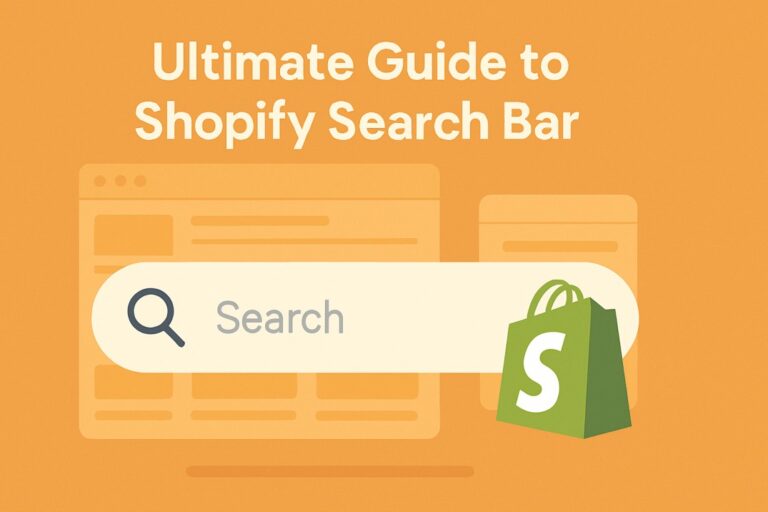A 2021 survey conducted by a leading design firm found that a web page’s navigation link is the first thing that 38% of website visitors see. If the website’s functionality is poor, over 40% of visitors will choose to leave the website. Similarly, over 35% of visitors will cease to take a website’s services if finding what they seek is difficult.
Easy navigation means a lot to your website visitors. Shopify collection pages are a step in the same direction.
Shopify collections make a world of difference to your conversion funnel. This is the path that a customer follows when he first sees your product to the time when he makes a purchase.
If your web mall brings high conversions, and collection pages Shopify is going to work tremendously well. This brings more sales because you display an organized assortment of products or services for your customers, which are matched ideally to their requirements.
Defining a Shopify Collection Page
In a Shopify Collection Page, specific products are all grouped. In case you run a smaller eCommerce mall, you could use a Shopify Collections Page to club together all your products.
Product categories are frequently used for defining a Shopify Collections Page, which could be as simple as jeans and t-shirts.
Let us suppose that your visitor seeks to buy products from any particular category. He’d first navigate to the category, and each of the related products would be visible to him. This way, scrolling through the products of interest will be easier for a visitor.
Purchases, however, are made on product description pages.
Two of the most important things that a visitor to your store intends to know are what products interest him and how he can buy them.
Why are Shopify Collections used?
While collection pages on Shopify induce more conversions at a Shopify store, they also boost the levels of product awareness. So, an online merchant should try to make sure he makes multiple Shopify Collection pages on his store. Browsing and making purchases will simplify for the visitors this way.
Shopify brings to us different ways to feature collections and we can take a look at them here.
- Products for different sections of buyers, like men’s, women’s, or kid’s
- Products based on function, like computer mice, showpieces, or candles
- Products defined by specifications such as colour, size, or fit
- Products on sale for special occasions, like Christmas sweaters
An important classification of collection pages for Shopify is manual collections and automated collections.
- Manual collections
In a manual collection, all products that you intend to add are included. However, such a collection is not easy to maintain because new entries won’t be added automatically. But, manual collections deliver the best results when you run discounts or flash sales.
- Automated collections
In an automated Shopify collection, products are added automatically based on the conditions that a user specifies. This turns out to be a time-saving implement in case you have many items in your inventory that meet the requirements of the collection.
It is easy to see that the most important benefit of collection pages on Shopify is that a customer gets to access each of the goods available easily based on his preferences. If we consider the viewpoint of the shoppers, this eases the shopping experience by simplifying navigation. A shopper is going to have more choices in terms of the products that interest him. Similarly, for merchants, this brings more sales.
What components does a collection page have?
1. Category name
In the navigation menu towards the top, you are likely to come across the category name. These are the categories that shoppers can browse through. This aids with the identification of customers based on the categories they view.
2. Breadcrumbs
Breadcrumbs are in place for the display of the parent categories or subcategories on a collection page. This allows shoppers to move quickly between different categories such that they can see the different collection pages. Based on their discretion, they can view products from any collection.
3. Sort menu
By using the Sort menu, a customer can go through the products based on different criteria, like Bestsellers, Price: low to high, etc.
4. Page name
A single category can have many different collection pages. If we consider the t-shirt category, it can have different collections like polo shirts, round neck shirts, and full-sleeved shirts.
5. Pages
A collection page will have many products that will be segregated into individual pages to let a consumer easily navigate through products and find what he seeks. A page is likely to have 50 or 100 products.
6. Browse by
By using a browse-by menu, after a customer gets to a category page, he can further navigate to a more specific subcategory page.
7. Filter menu
Upon landing on any particular collection page, a visitor can start using the filter menu. This lets them filter the products by attributes like availability, price, and colour.
8. Product details
Product details are in place such that a visitor keeps aware of what each product is all about. Besides the price, a visitor comes to know of promotional offers, customer ratings, and available colours.
Conclusion:
In business, a common saying goes that what is visible, sells. In the competitive era that we live in, getting a consumer to your website is challenging. When the aforementioned happens, you’d want to try and ensure that you close the sale.
In the dearth of collection pages, landing a consumer on your website might turn out to be a futile activity because he might not find what he is looking for. So, collection pages on Shopify ease the accessibility of your products for the end consumer.
Then, via collection pages, a consumer quickly comes across the product that he seeks to find. View times are another challenging aspect that web malls deal with. So collection pages boost the odds of making sales while the consumer is still on your website.
Collection pages boost end customers’ shopping experience. By boosting the odds of a consumer making repeat purchases, collection pages aid with customer retention.




